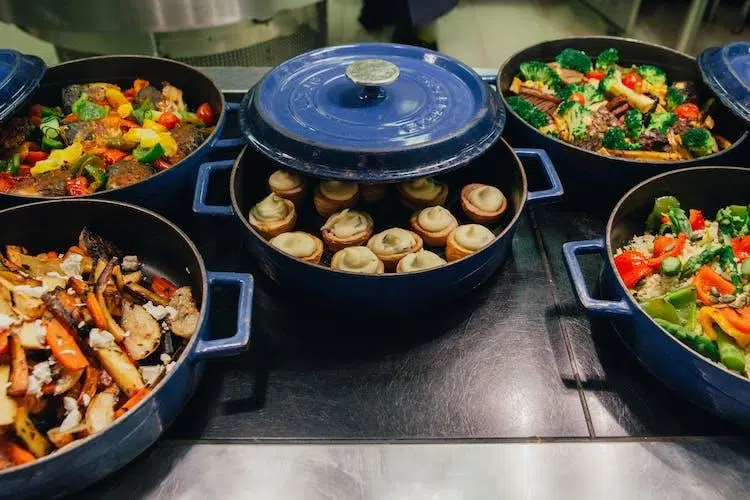Exploring New Flavors Adjusting to Cuisine in a Foreign Country
Traveling or moving to a new country offers an unparalleled opportunity to dive into a beautiful mix of flavors and culinary traditions. Adjusting to cuisine in a foreign country is an adventure that delights the taste buds and opens the door to understanding the local culture. Every dish tells a story, every flavor carries a history. It’s not just about eating; it’s about connecting with people and their heritage. The process of adapting to different tastes can be complicated but incredibly rewarding. It involves overcoming preconceived notions about food and embracing the unfamiliar. As you navigate through this journey, you’ll find that food is a universal language, bridging gaps and forging bonds. This culinary adventure is an integral part of the travel experience, offering insights into the region’s agriculture, history, and lifestyle.
Initial Impressions and Challenges
Stepping into the culinary world of a new country often evokes a mix of emotions. The initial encounter with foreign cuisine is like opening a book to a fresh chapter, filled with unfamiliar characters and narratives. You may find yourself facing ingredients you can’t identify or dishes you’ve never heard of. The cooking techniques and flavor profiles may vastly differ from what you’re used to. Dining etiquette varies greatly across cultures, from the use of utensils to the pace of eating. For example, in Japan, it’s customary to slurp noodles, while in some parts of Europe, this would be considered rude. Adapting to these differences is part of the adventure but can be challenging. It’s a sensory and cultural exploration that requires an open mind and a willing palate. Embrace the unfamiliar and allow your taste buds to be your guide in this new landscape.
The Journey of Adaptation
Adapting to a new culinary environment is an art that unfolds gradually. For instance, consider someone moving to Ottawa. In the midst of the house relocation in Ottawa, the individual encounters the diverse and hearty nature of Canadian cuisine. Initially, the shift might seem overwhelming – from mastering the art of enjoying poutine, a dish of fries, cheese curds, and gravy, to appreciating the sweetness of maple syrup in various forms. It’s about finding familiarity in a bowl of Canadian pea soup while gradually venturing into the world of tourtière, a traditional meat pie. Understanding the history behind these dishes, such as the indigenous influences in Canadian cuisine, transforms eating into an educational experience. The key is to go step by step and give yourself time to adjust no matter where you are. And also If you’re feeling homesick, try integrating a familiar ingredient into a local dish.
Exploring the Cuisine in a Foreign Country: Discovering Local Favorites
One of the best ways to immerse yourself in a new culture is through its food. Exploring local markets and street food stalls offers a window into the heart of a country’s culinary traditions. These places are often where you’ll find the most authentic and traditional dishes. Local guides or friends can be invaluable in this exploration, introducing you to foods that you might not have tried otherwise. They can explain the nuances of the dishes and their cultural significance. Often, the simplest of meals prepared by street vendors or in small local eateries can leave a lasting impression with their rich flavors and authenticity. These experiences not only tantalize your taste buds but also create lasting memories. They provide an insight into the everyday life of locals and their culinary practices.
Health and Dietary Considerations
While indulging in various culinary delights, it’s important to consider dietary needs and health. Understanding the ingredients and preparation methods can help in making informed choices, especially for those with dietary restrictions or allergies. In many countries, traditional diets are based on fresh, locally sourced ingredients, offering plenty of healthy options. For instance, the Mediterranean cuisine, renowned for its health benefits, emphasizes fruits, vegetables, whole grains, and lean proteins. Learning about these local diets helps in maintaining a healthy lifestyle while abroad. It’s also a chance to discover the health benefits of local ingredients and cooking methods, which might differ significantly from what you’re accustomed to. Balancing the exploration of new tastes with mindful eating ensures a wholesome and enjoyable culinary experience.
Fusion and Innovation in Cuisine
The intersection of different culinary traditions often leads to exciting innovations and fusion cuisine. As you adjust to new flavors, you may find inspiration to experiment in your cooking. Combining familiar ingredients with new techniques or exotic spices can result in creative and delicious fusion dishes. This blending of culinary cultures enhances your cooking repertoire but also reflects the evolving nature of global cuisine. For instance, you might find yourself using a traditional spice from India in a classic Italian dish, creating a unique and flavorful fusion. Such experiments can lead to surprising and delightful results, offering a taste of both the familiar and the new. This fusion approach to cooking is a testament to the versatility and adaptability of food and how it can bring together diverse cultures in delicious harmony.
Building a Lasting Appreciation
The journey through the diverse world of cuisine in a foreign country does more than just expand your culinary preferences; it builds a bridge of appreciation and understanding between cultures. This experience of exploring and adapting to new foods extends beyond the duration of your stay. It influences your palate and cooking long after you return home. Integrating new flavors and dishes into your daily meals keeps the spirit of your culinary adventure alive. More importantly, it fosters a deeper appreciation for the diversity and richness of world cuisines. This ongoing exploration is not just about food; it’s about embracing different cultures and perspectives. It’s a journey that doesn’t end, continuously enriching your life with flavors, stories, and connections.
Caption: Culinary journeys like this influence your cooking and let new flavors into your daily life. Alt text: Woman in an apron cooking in a white kitchen
Conclusion
Adjusting to cuisine in a foreign country is a process filled with discoveries, challenges, and joys. It’s an adventure that goes beyond mere eating. It’s about experiencing a culture through its most fundamental and universal aspect – food. This journey shapes not just our taste preferences but also our understanding of the world. As you share your experiences and favorite discoveries, you inspire others to embark on their culinary adventures. So, keep exploring, tasting, and enjoying the vast and exciting world of flavors that await in every corner of the globe.
Meta: Explore the process of adjusting to cuisine in a foreign country, from initial challenges to embracing local flavors.







